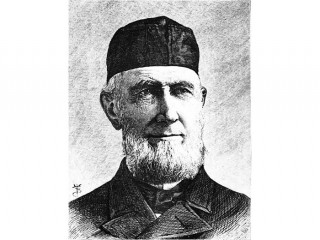
James Buchanan Eads biography
Date of birth : 1820-05-23
Date of death : 1887-03-08
Birthplace : Lawrenceburg, Indiana, U.S.
Nationality : American
Category : Arhitecture and Engineering
Last modified : 2011-07-12
Credited as : Civil engineer, inventor, diving bell
James B. Eads was born in Lawrenceburg, Ind., on May 23, 1820. His father moved his family often, and James attended various public schools until the age of 13. After 5 years as a dry-goods clerk in St. Louis, he became a purser on a Mississippi River steam-boat and a self-taught expert in river navigation and hydrography.
Eads patented a diving bell in 1841 and used it on specially designed craft to salvage wrecked riverboats. After a brief, debt-ridden interval, he returned to salvaging, which proved very lucrative after 1848. He amassed a fortune and lived in semiretirement from 1857 to 1861.
In 1861 President Abraham Lincoln summoned Eads for advice on how to use western rivers for military purposes. Eads proposed a fleet of armor-plated, steam-driven gunboats and contracted to build seven 600-ton vessels. Ironclads became the mainstays of the Army's Western Flotilla and from Oct. 1, 1862, the nucleus of the Navy's Mississippi Squadron.
During the Civil War, Eads built 14 armored gunboats, 6 of them turreted; their 11-and 15-inch guns, worked by steam, could fire every 45 seconds. He converted and armed at least 11 others. These boats were indispensable in defeating the Confederacy.
In 1865 Congress authorized construction of the first bridge across the Mississippi at St. Louis, although it was declared impractical by leading civil engineers. Eads was selected to build it. The bridge, with three arches, each over 500 feet, and a roadway 50 feet above the water, was the world's first steel-arch railroad bridge. Finished in 1874 after 6 years of building, it brought Eads international fame. For many years the only bridge spanning the Mississippi, it was vital in opening the transcontinental railroad system.
Among engineers Eads received even greater recognition for his work on the lower Mississippi channel. Congress approved his proposal to open the river's mouth and maintain the channel at his own risk, and the job was completed in 1879. Eads's ingenious jetties redirected and accelerated the current; sediment was deposited at sea, and the channel, deepened to 30 feet, made New Orleans an ocean port.
Eads became a technical adviser on river control for many American and foreign port cities. His plan for deepening the Mississippi northward to the mouth of the Ohio later proved practicable. In 1884 he became the first American to receive England's coveted Albert Medal of the Society of Arts. Later he was the first engineer to be voted into America's Hall of Fame. He died on March 8, 1887, in Nassau, Bahamas.
















